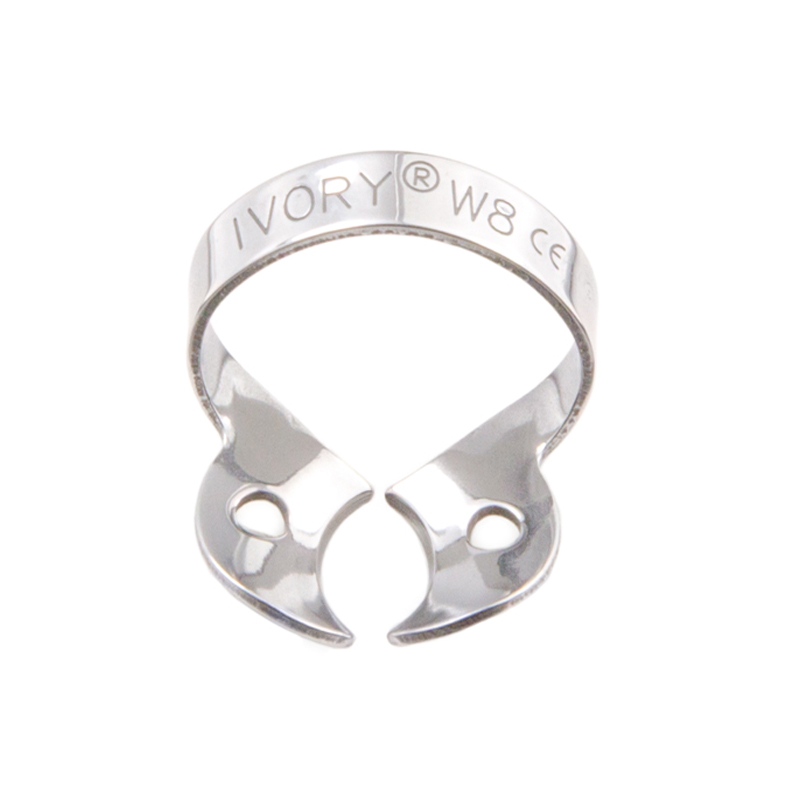Rubber dam tip for when it gets stuck on the tooth
I have had multiple instances of rubber dam clamps getting stuck on the tooth as it is difficult to insert the tips of the forcep back into the holes when it is time to remove the dam. The problem usually arises when the holes of the rubber dam clamp are angled towards each other which hinders penetration by the rubber dam forcep tips as the angled hole is not the same size as the forcep tip. I commonly see this on when the clamp is overstretched with the bending of the clamp bow changing the angle between the flat sides of the clamp. It is also more common in clamp designs that have the points of the clamp pointing downwards as the flat sides have a preexisting slope to them (Figure 1). Occasionally, teeth that have bulbous crowns and recession will have a clamp that sits more apically on the tooth, the clamp will be closed further and the contour of the tooth crown can hinder access of the forcep tips to the hole.
One modification I have seen suggested is to grind back the lateral aspect of the forcep tip to make the profile smaller and more easy to enter the holes (Figure 2). This will also certainly help to remove the forceps in the situation that the clamp has been placed but the deformation of the clamp traps the forcep tips in place.
 |
| Figure 1: An example of a wingless clamp with the flat sides angled downwards. If the clamp is overstretched e.g a wide tooth buccolingually, the forceps may be blocked from entering or be difficult to remove once the clamp is placed |
| Figure 2: The rubber dam clamp forceps are modified by grinding back the lateral aspect of the tip with a diamond bur or stone |
I encountered one such challenge in the student clinics some weeks ago. A student asked me for my assistance to remove their rubber dam. I tried a few times but couldn't get the forcep tips through the hole as the holes were angled as well as blocked by the contour of the crown. My efforts had pushed the clamp apically and were making the patient very uncomfortable. I was almost at the point of trimming back the forcep tips when I had a brain flash. I ended up gripping the forcep tips under the readily available clamp bow (Figure 3) and levering the clamp off from there. This tip was a lifesaver at the time and was a great relief to me. The risk with this is that the bow has no undercut to grip the clamp with and so it is very easy for the clamp to shoot off the forceps so once it is removed off the tooth, make sure you grab the clamp with your hands before you take the forcep pressure off it. Better yet, I haven't tried it yet but I assume the specific forceps used to apply sectional matrix rings may grip the clamp better as they have a curve that may lock onto the clamp bow.
| Figure 3: Red circles denote the alternative place you can grip onto a clamp if you can't access the holes |
Comments
Post a Comment
Please leave a comment and let me know what you think or if there are any topics you would like covered in the future